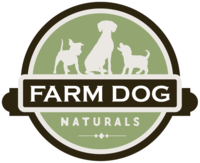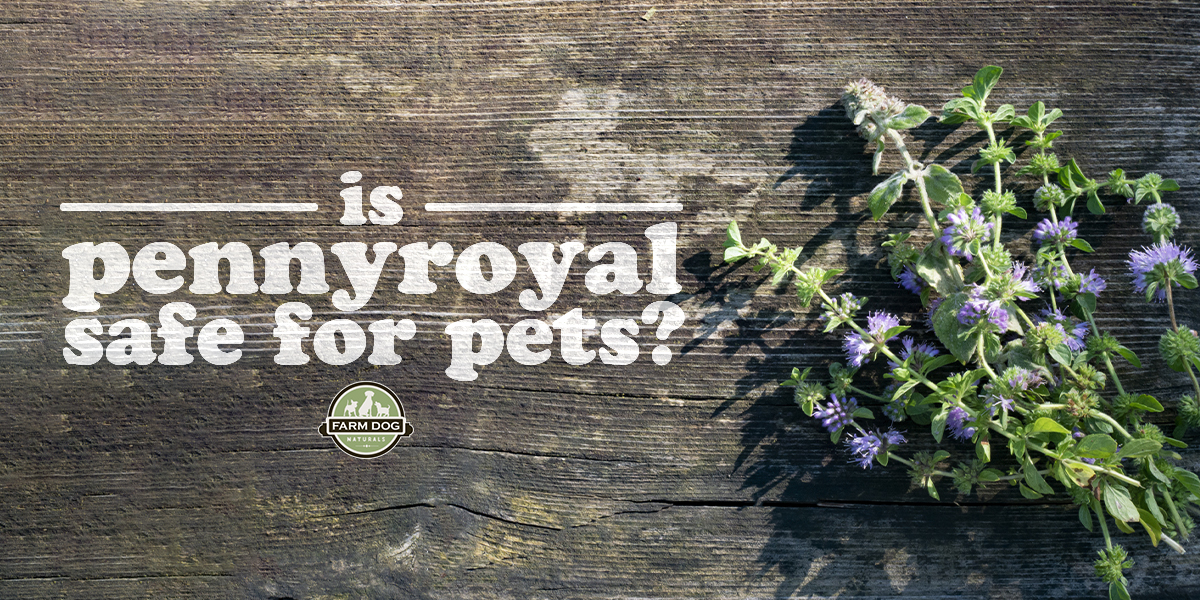Has anyone ever told you that pennyroyal for dogs is an effective insect repellent? That it can help repel fleas and ticks with ease?
I recently ran across a post on one of my favorite blog sites that offered this bit of advice: “The second best essential oil for repelling ticks is American Pennyroyal.” The writer went on to tell the reader to apply a few drops of oil to a dog’s fur.
I couldn’t believe what I was reading – I wanted to scream. Dogs not only lick their fur but also absorb 60% of what is applied to their skin. From an herbalist’s perspective, yes, it may be an effective insect repellent, but is pennyroyal safe for dogs? Just because something works doesn’t mean it should be used – especially on our pets.
If you’ve read this advice anywhere before, or have been looking for a better alternative for fleas and ticks and run across pennyroyal, I urge you to keep reading.
Does Natural Automatically Equal Safe?
Every herbalist has different teachers who have inspired them in their practice, a set of herbs that they favor, and a methodology that they use in their practice. No matter how we all differ, one element of herbalism that we can all agree on is the need for safety.
After years of adverse reaction reports, safety is one of the main reasons people are scrambling to find an effective natural alternative to chemical pest control options. Many dog and cat owners are willing to try anything to avoid using these toxic chemicals. Knowing this, manufacturers have created a deluge of “natural” flea and tick products to address the growing concern. And the marketing often works. Thinking that ‘natural’ automatically means safe, people will try a product without researching the ingredients and sometimes without even reading the label.
But please, don’t be fooled by these tactics. Natural does not mean safe, and many misinformed owners are putting their dogs at greater risk by blindly entering the all-natural pet care world with unquestioning trust of the manufacturer.
A little research can save you a lot of trouble!
The most popular pharmaceutical alternatives for fleas and ticks are herbs and essential oils. All of these natural substances have within them the power to address a myriad of issues that our pets face every day. That being said, the use of many plants and their essential oils demands respect and knowledge. One such herb and essential oil that is a favorite of many makers of flea and tick protection is pennyroyal.
But is pennyroyal safe for dogs?
Is Pennyroyal Safe for Dogs?
Pennyroyal is also known as American pennyroyal (Hedeoma pulegiodes), European pennyroyal (Mentha pulegium) and Mountain pennyroyal (Mondardella odoratissima). It has been used as an insect repellent for centuries because insects absolutely detest its heady pungent odor. All species of pennyroyal belong to the Lamiaceae family and go by the common names of mosquito plant, tickweed, pudding grass, squamint, lurk-in-the-grass, and run-by-the-ground. Most people in the US just refer to it as pennyroyal, the smallest member of the mint family.
So, it is an effective insect repellent, that much is clear. But for pets? Is pennyroyal safe for dogs?
Why It Should be Avoided
Considering it’s so small, pennyroyal really packs a punch.
The main chemicals found in the plant’s essential oils include:
- pulegone
- methone
- iso-menthone
- octanol piperitenone
- trans-iso-pulegone
Of all these substances, pulegone is the most concentrated and threatening. Pulegone turns into the liver damaging chemical menthofuran when it enters the body. Pulegone is known as a keytone. Keytones are found in many essential oils and not all of them are dangerous. However, the keytones found in pennyroyal essential oil are deadly and make up over 85% of the chemical constituents in pennyroyal essential oil. This high percentage of harmful keytones makes it toxic to the kidneys, nervous system and the liver.
For example, a 1992 study reported that .07 oz of pennyroyal essential oil was applied to a dog’s skin to help control fleas. “Within 1 hour of application, the dog became listless and within 2 hours began vomiting. At 30 hours after exposure, the dog exhibited diarrhea, hemoptysis (coughing up blood) and epistaxis (bleeding from the nose). Soon thereafter, the dog developed seizures and died. Histopathiologic (tissue) examination of the liver showed massive hepatocellular necrosis”. In other words, the dog died of liver failure.
It is astonishing that the small dose of pennyroyal oil systemically shut down the dog’s organs. No matter what the veterinary staff tried to do to save the dog, they couldn’t. This example is very sad, but stands as a testament to the dangers of using pennyroyal essential oil for any reason.
Pennyroyal Toxicity Symptoms
Based on this study and others, the effects of pennyroyal toxicity may include the following:
- Bloody Nose
- Diarrhea
- Nausea
- Seizures
- High blood pressure
- Accelerated heart rate
- Unconsciousness
- Liver damage
- Kidney damage
- Renal damage
- Abortion
- Death
But It’s Such an Effective Repellent!
You may be asking yourself if there is any way that you can safely use pennyroyal on your dog since it is so effective at keeping insects away. My answer will always be no.
You will find many people who’ll tell you to roll up some of the herb in a bandana and put it around your dog’s neck before you go outside. This may be effective, but at what risk? Others will tell you that it is ok to sprinkle pennyroyal herb in and around your pet’s bedding to keep those pesky fleas away. Again, I would not recommend it.
If you are set on using pennyroyal no matter the risks, then I would suggest using it as a tea or hydrosol (the water by-product of the essential oil distillation process) applied externally as a flea and tick dip or rinse. But again, my advice for using pennyroyal safely is not to use it at all!
There are safe, effective, and truly natural products for fleas and ticks on the market that don’t contain dangerous ingredients. I suggest that you research each ingredient on the label before purchasing and take great care in formulating your own insect repellent recipes.
As natural canine care expands and people come to depend on herbals as a viable alternative to pharmaceuticals, safety concerns expand as well. Good intentions: most people have them, but unfortunately when it comes to natural medicine, sometime even the best of intentions can result in some really bad advice.

